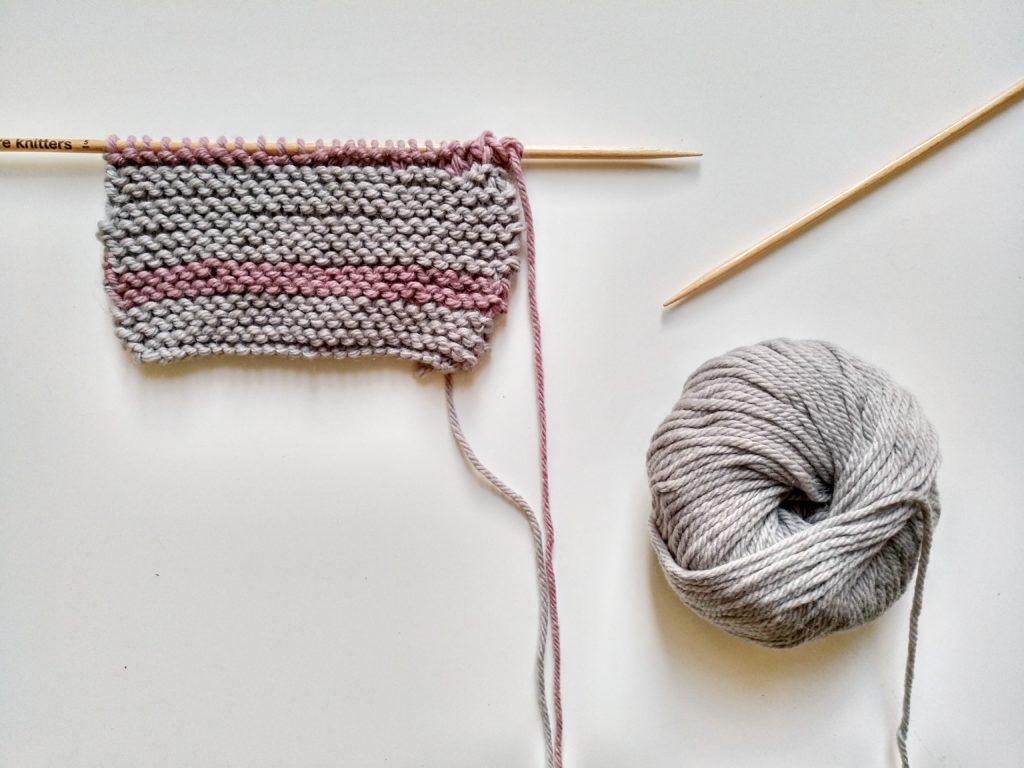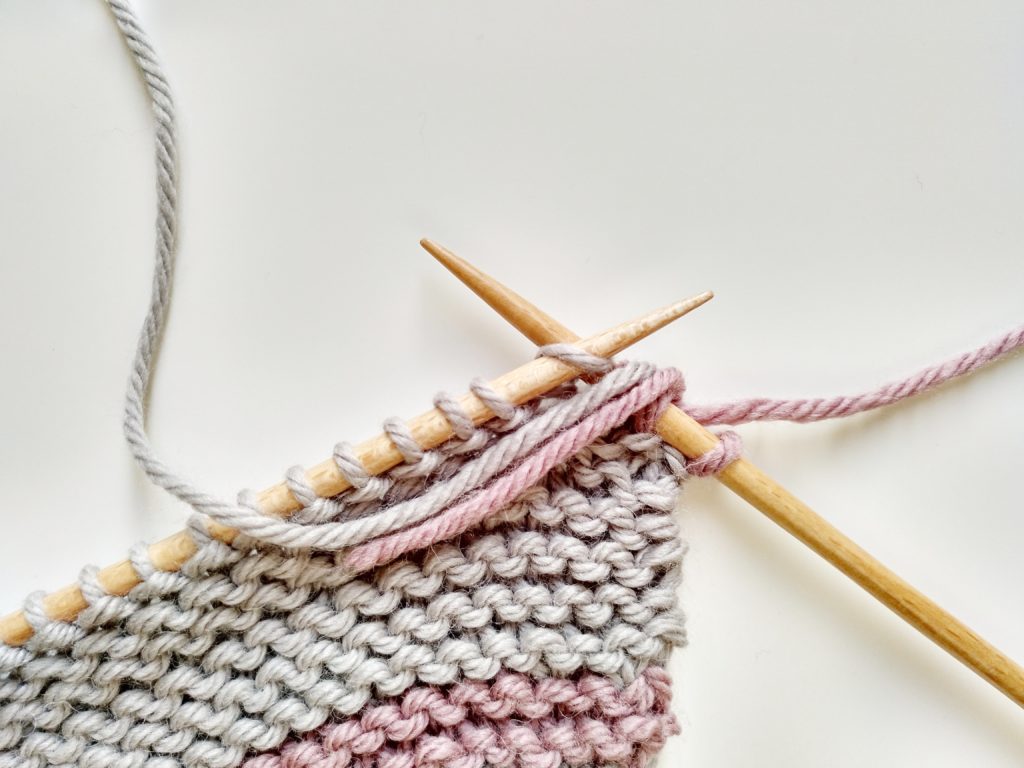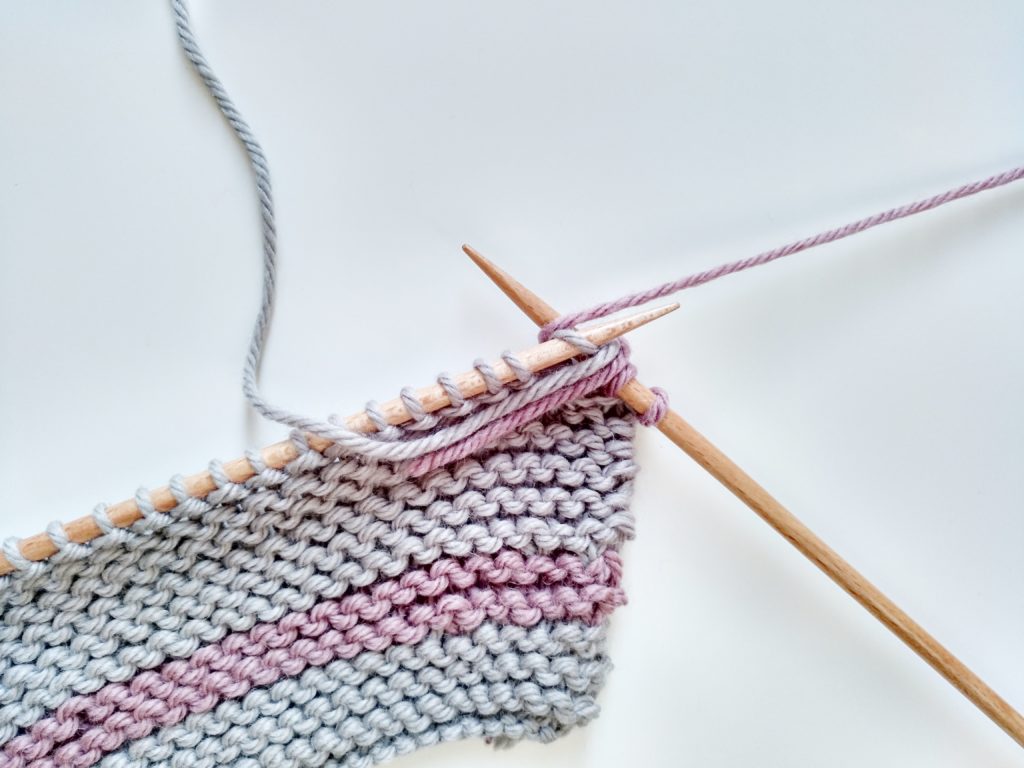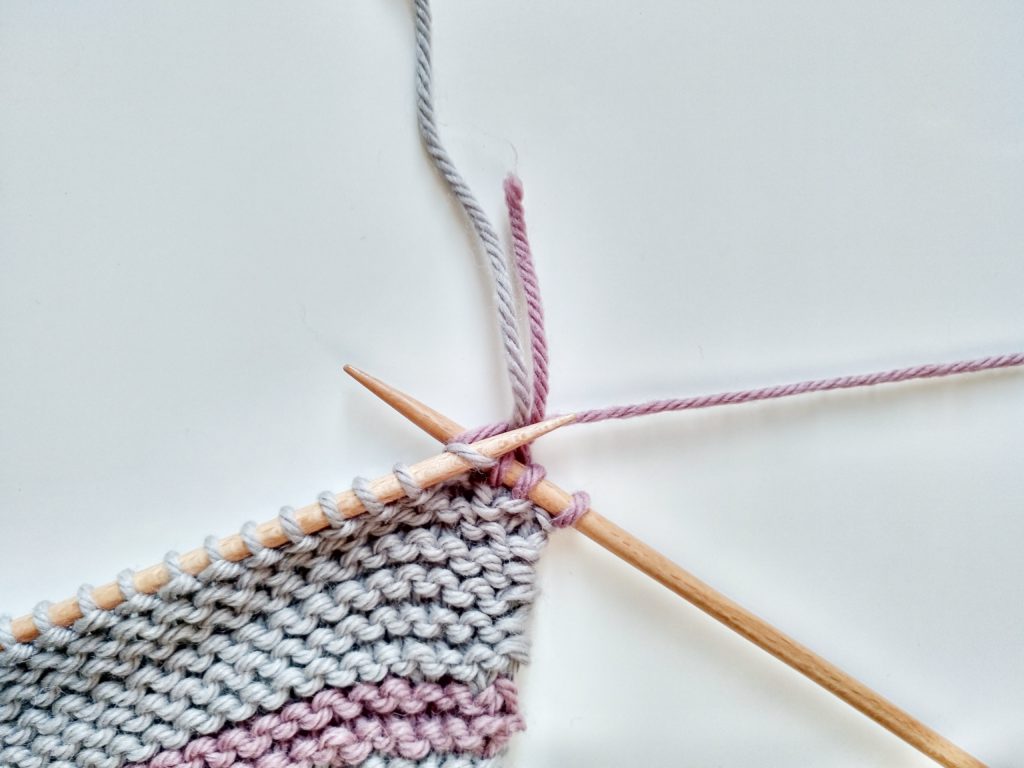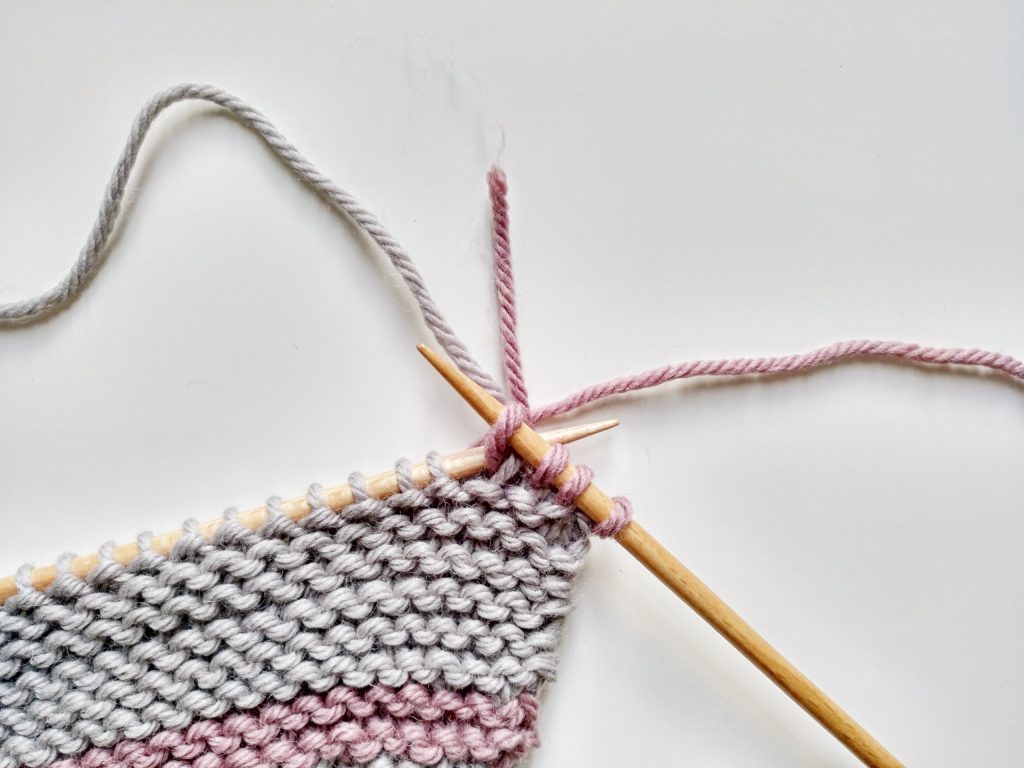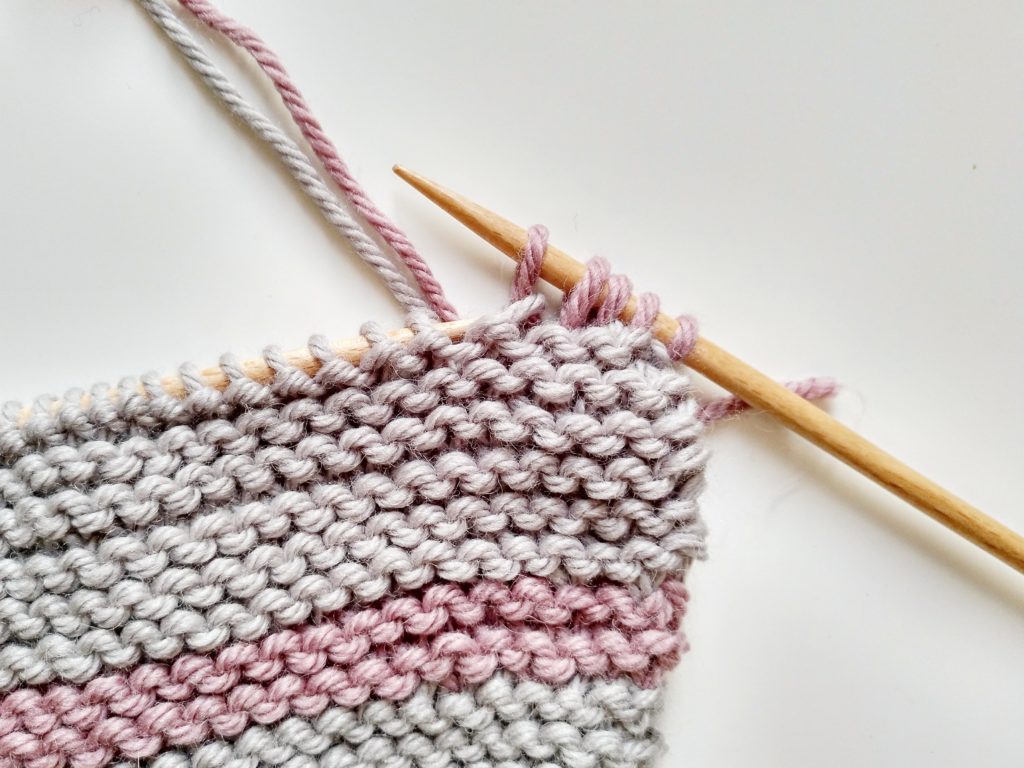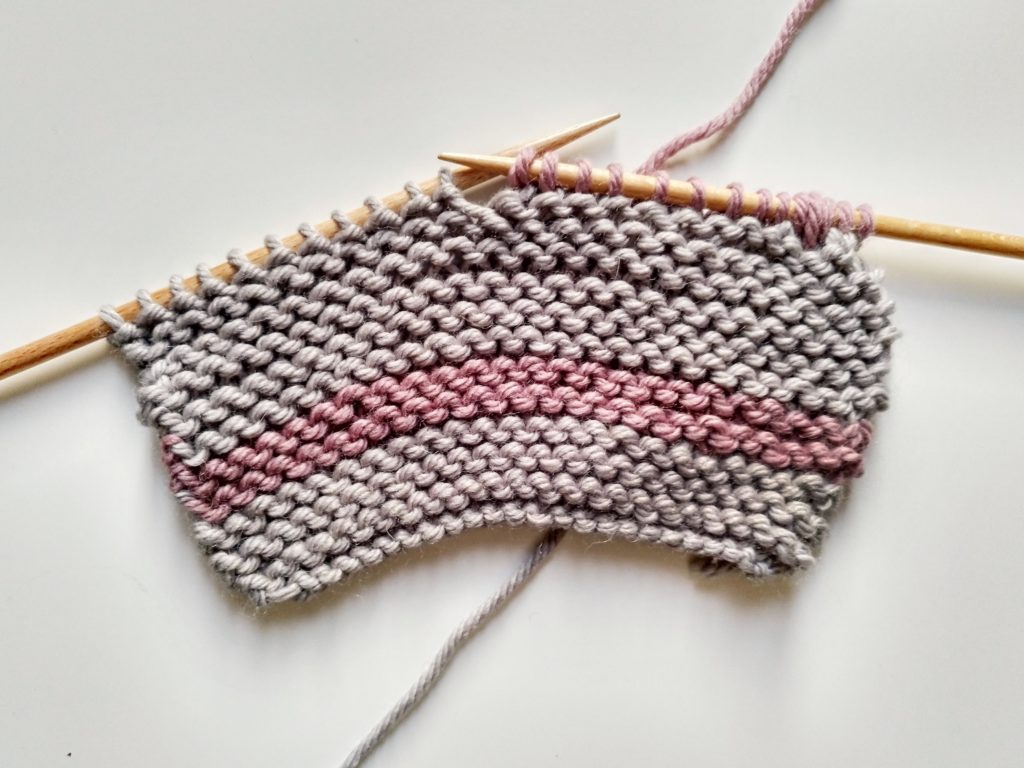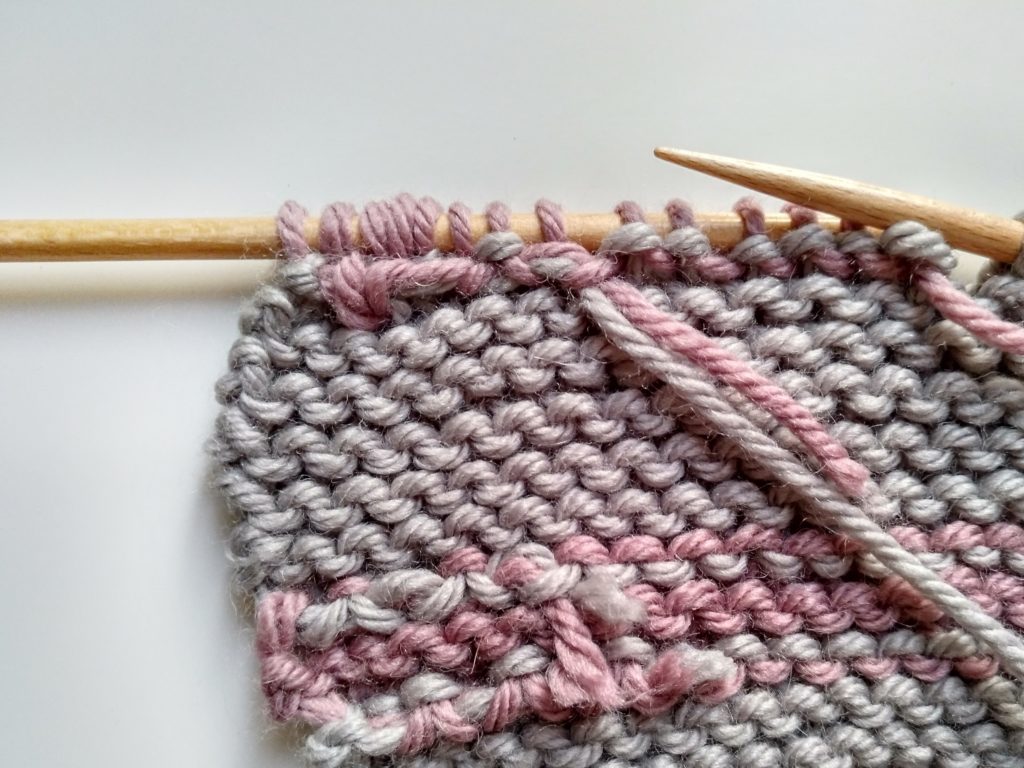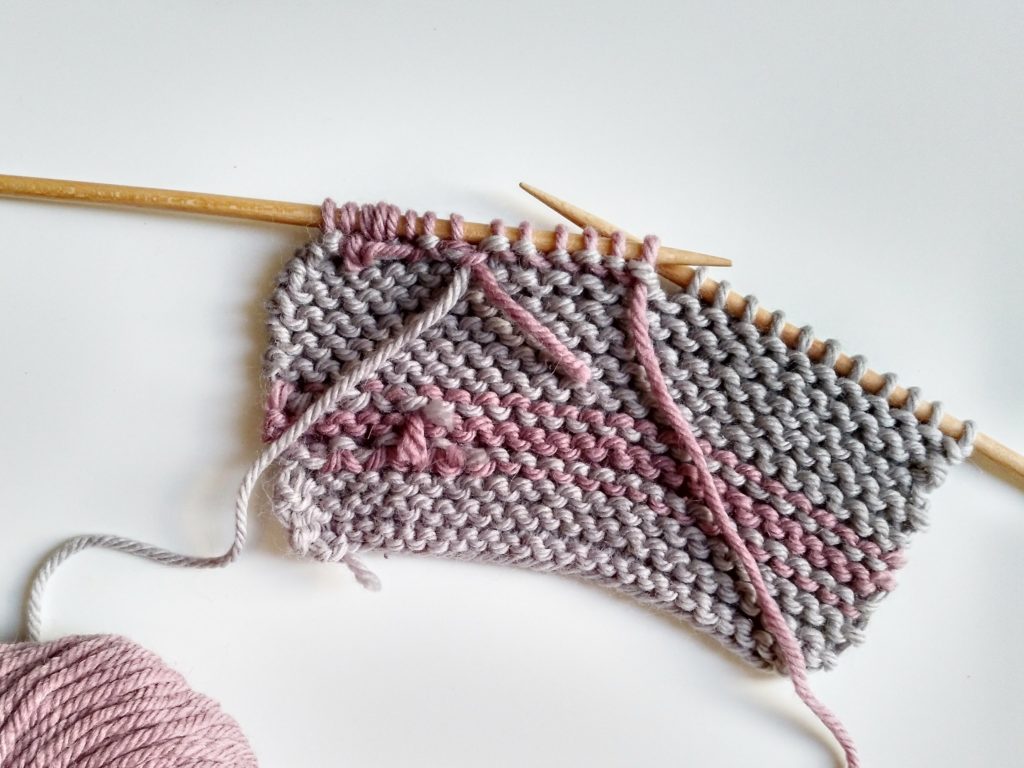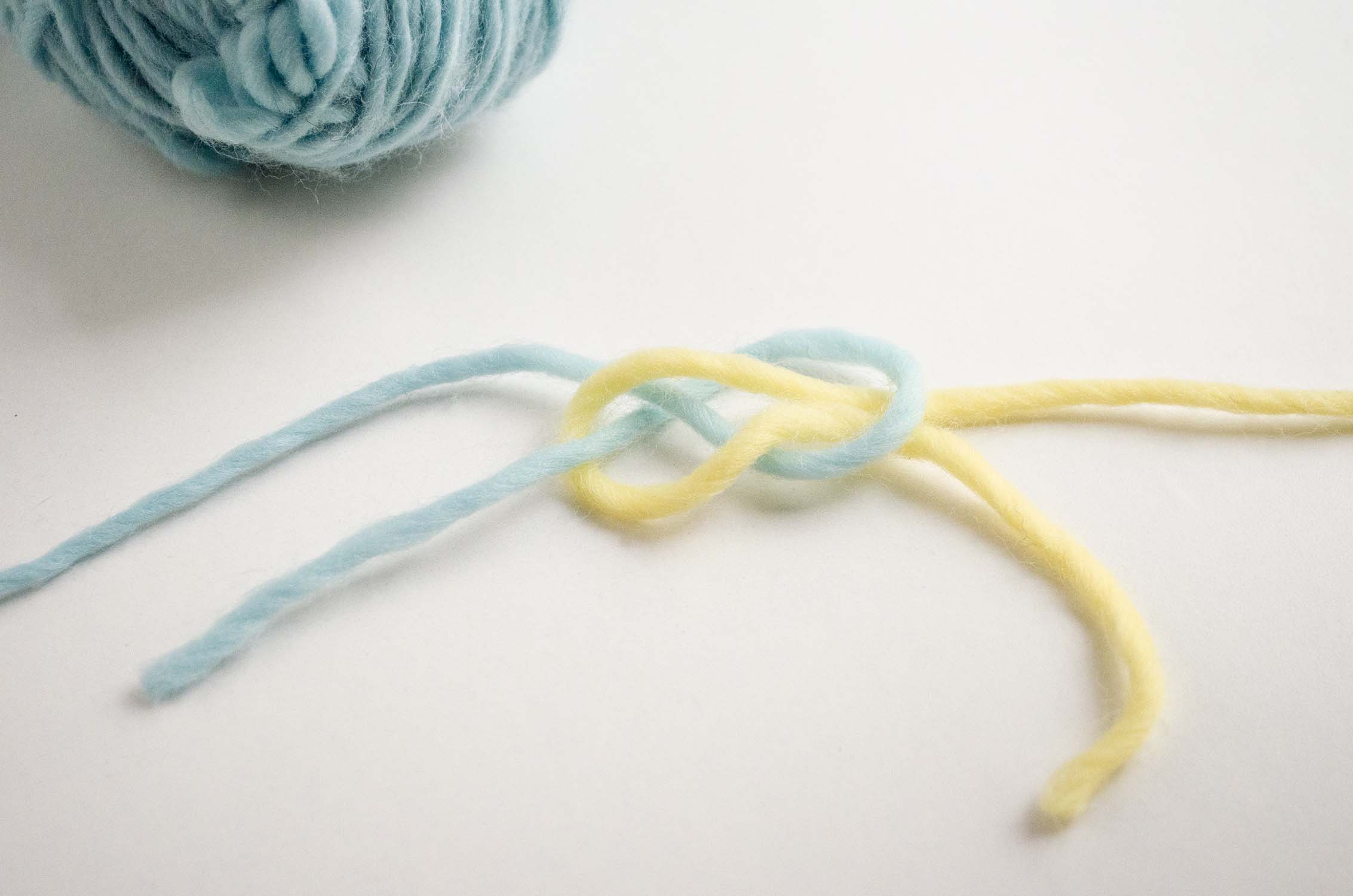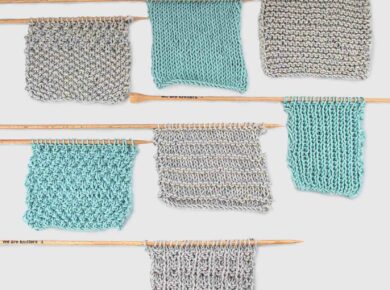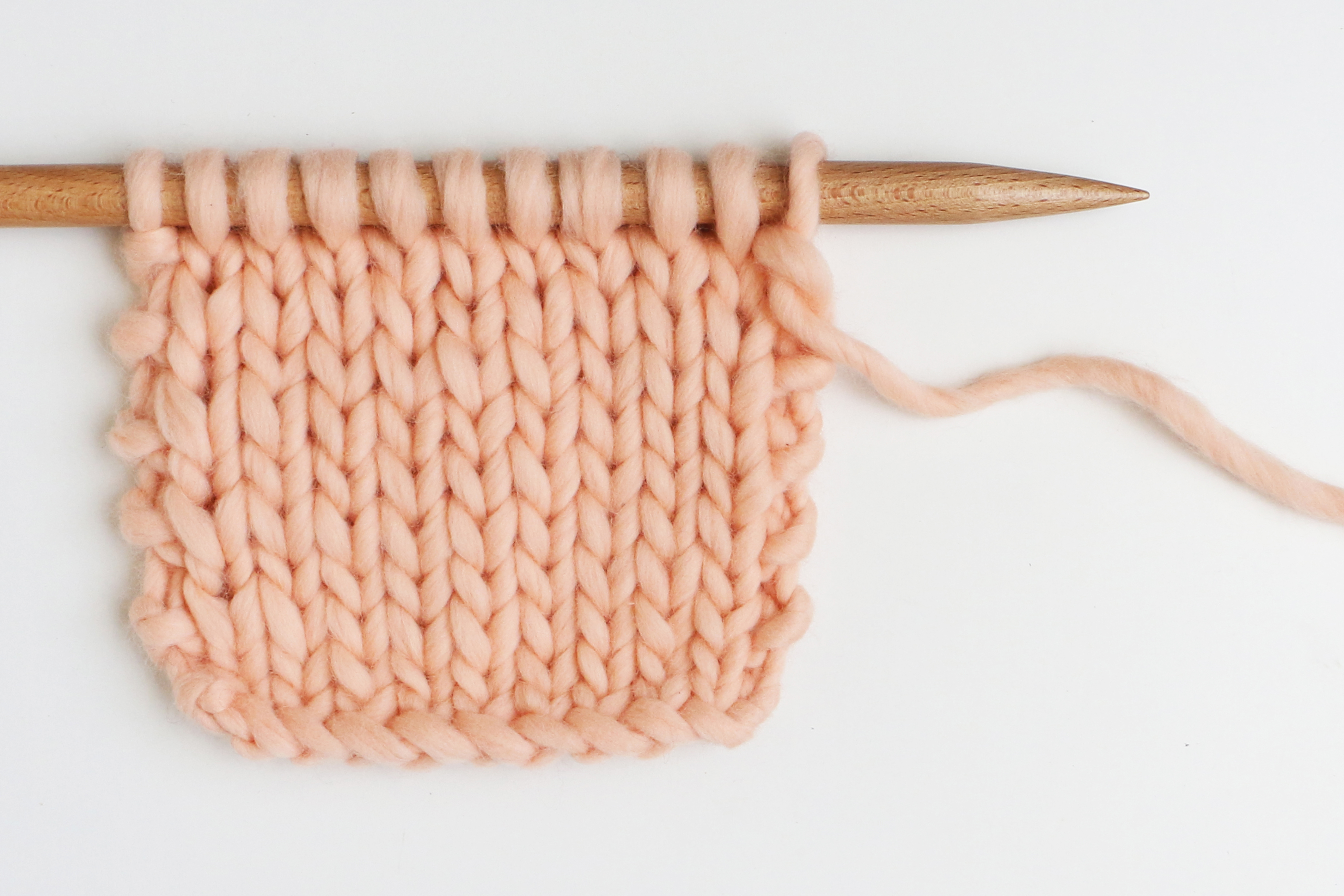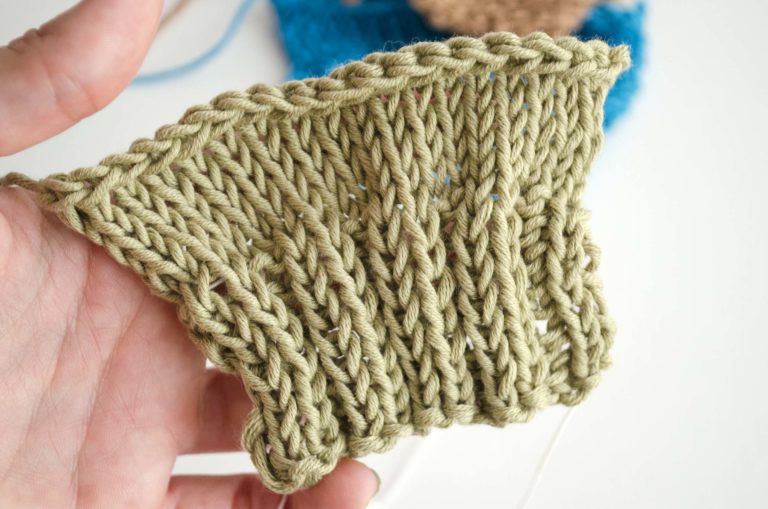In this tutorial we will show you how to finish off a tail while knitting.
In some tutorials is suggested to work both tails together for two or three stitches, however this makes the project ugly since it makes the fabric bulkier, and if you are introducing a new color, that color change will be very noticeable.
With this technique you will see there is be no trace of the old tail, the project is still pretty, and the right side remains the same as if there was no technique at all.
For this demo we have worked some rows in one color, and then others in a contrasting color. As you can see, it doesn’t show in the wrong side. Now let’s see how we did it:
- We need to hold the tail we will put down -in this case the gray one- to the left together with the short end of the tail we will introduce -in this case the mallow one-. The long end of the new strand will be on our right. -And everything we want to “hide” to our left.-
- We will work the first stitch as usual.
- We introduce the needle as usual and before taking the stitch off the needle, we pass both the short end and the tail we are hiding above the needles.
- Now wrap the needle with the strand as usual. Always keeeping the tails to hide to the front.
- We pass to the back the tails to hide and we finish with the stitch.
- We work the next stitch as usual.
You must repeat these steps for about 7 stitches, this is, 3 usual stitches, followed by a hiding tails stitch and finish with a usual stitch.
The trick, as you will see, is to bring the strands in front of your project, hold them with the stitch your are working, and bring them to the back of your project with the worked stitch.
It sounds a little complicated but you only need to do it for 3 or 4 stitches, so be patient, it’s easy.
In this technique, as you can see on the wrong side of our project, the strands are perfectly hidden and you only need to cut the tails of the last hiding stitch.
It’s important you keep in mind that by hiding stitches in a garter stitch fabric or any other reversible stitch, the wrong side of your project will be bulkier so you should always hide the tails on the same side. This way, this fabric will no longer be reversible.
You can use this technique for big color changes lsuch as “color blocking”, for intarsia, or when you have stripes of color in a garment.
